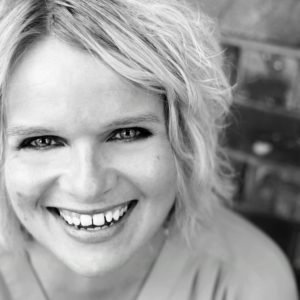When Angie Albright spreads the message about a community need or seeks funding that serves the people and the history of the area where she lives, she’s going to get results.
Albright, the director of the Clinton House Museum in Fayetteville, Ark., will creatively adapt the message to reach individuals in her target audience. For many people in civic and philanthropic positions throughout Arkansas, Albright is practically a household name. To know Albright is to understand that her prolific work in the community is less about the specific roles she’s held as a volunteer or director and more about who she is as a person. In her broad experience working with nonprofits, she consistently produced whatever content was needed to meet the organization’s goals: Whether that’s running social media to help fund a camp for youth with disabilities or sending out print mailers to museum donors.
Albright says that fundraising is its own blend of art and science. Effectively communicating to a variety of individuals is a skill she brought to this work in the crossover from almost two decades of teaching college. Like any good educator, she knew that multiple approaches were crucial in teaching a diverse classroom. “What is content, but creating things on different platforms that reach people in different ways?”
This has been a critical component in her strategy, whether she’s enlightening a corporate executive about the realities of homelessness or explaining to residents the importance of conserving a piece of local history.
“Larger nonprofit organizations and those with savvy fundraisers will segment their donor audiences and deliver different types of messages to them based on their capacity or history of giving. Cultivation often includes face-to-face interactions where the development officer uses relationship-building to persuade or inform a potential donor of the value of their investment. Many of these interactions do not include an actual ask for a financial donation. Rather, the strategy is long-term and helps donors feel personally tied to the organization.”
Tailor the Message to the Audience
The strategy is similar to content marketing used by businesses to build relationships, and Albright points out that nonprofit and business communication strategies often overlap. But where businesses typically try to solve a problem for an individual or another business, nonprofits inform the community about a problem and how the organization fills a social need.
This nature of nonprofits means they need communicators in a variety of voices to reach visitors, social media followers, regular donors, foundations, board members and grantmakers.
“Each of these audiences requires a different type of language. For example, fundraising communications typically put donors at the center of the story to draw them in,” Albright says.
Use Data to Make the Message Stick
As the executive director of a domestic violence shelter at the start of her nonprofit career, Albright used client data about the prevalence of the violence in the community as a persuasive tactic to raise awareness.
Today, she follows the research on donor communication and makes the donor the hero. “We appeal to people’s need to feel empowered and to participate in the narrative,” she says.
The visual content strategy of sharing the photos of the children at camp from previous summers proved far more effective than when the youth organization simply asked for contributions. Sending out images directly and on various platforms helped people understand precisely what their money did when they gave.
During a recent appeal for the museum, Albright shared a personal story. In doing so, she invited donors to participate in the museum’s story by asking them to relate to their own feelings about how time and place matter. In that same letter, rather than typing out how many people visit the site each year or how the school field trips correspond with the state curriculum, she appealed to potential donors’ love for the city.
Connect the Dots for Your Audience
For a garden event hosted by the museum a couple of years ago, Albright advertised and sold tickets and set up raffles through usual channels. During the program, she paused the lively social activity and took to the podium to request financial donations. Albright and others with the museum offered plenty of ways for people to give, reducing the barrier between inspiration and action. They set up boxes around the venue for cash collections, envelopes with pre-printed pledge information, and signage about digital giving opportunities through text messages and online. “We have to make it easy,” she says. “The more steps required, the more likely a donor will give up.”
Albright stays prepared to individually educate a person who has a hard time acknowledging the prevalence of issues like domestic violence. “One in three visits to hospital emergency rooms are due to domestic violence. If you’re in a line at the ER, the issue has affected you. Most mass murderers have a history of domestic violence. If you’re worried about your child’s safety in the classroom, the issue has affected you.”
Relaying this kind of information in the conversation gives Albright a chance to take someone on a bit of a journey and use statistics to personalize it. The experience is a favorite part of her work. “Connecting the dots for people is fascinating.”






